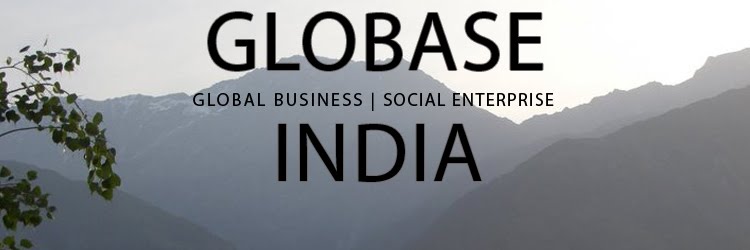The class sessions have been really great so far at teaching us about India and what it will be like to work with our client, CORD, while we are in country. I'd now like to take the time to talk about each of the classes thus far a little more in depth.
Class 1The first week was all about getting us used to working in our project teams and helping us to understand just how much work was ahead. The night started with a session led by Jeff McMullen, Kelley's Social Entrepreneurship professor, that introduced us to IDEO's method of "design thinking". This was an amazing way to start the 7 weeks because it helped us to see exactly how important it is to just LISTEN to what our clients are telling us. We must first understand the problem from their perspective and only then can we use that perspective to form potential recommendations. The first half of the session ended with a hands on bridge building competition. Let's just say I am VERY glad my team will not be responsible for building any architectural structures while in India!! :)
The second half of the night was devoted to project management. For this half of the evening we had the Consulting academy director, John Wisneski, come in and walk us through the necessary steps to effectively manage a project. It was during this session that the reality of the tasks at hand sank in for many of us. It was also during this session that I became even more excited and ready to get to work on helping the rural artisans of Northern India!
Class 2The second class was simply amazing! After learning in the first week what it takes to effectively perform an international consulting engagement, it was time to begin learning more about our destination of choice, India. The evening started off with a discussion led by Sumit Ganguly, Director of the India Studies Program at IU. Sumit walked us through the political history of India and how that history has shaped the current landscape. We could all see his excitement and the love of country Professor Ganguly has and walked away from the discussion very energized and excited for the rest of the GLOBASE program.
The second half of the class session was a macroeconomic case discussion led by none other than Phil Powell, Professor and Chairman of the MBA program. Phil was able to take us through the country's macroeconomic history, tieing in much of what was discussed during the first half of the evening. The most important take away for me from this session was Phil's insistence that we look at
why India made some of the economic decisions they had made in the past. I was reminded that no matter how something looks, we must realize that people, as rational human beings, will always do what they think is best and that it is in understanding why these decisions are made that true insights into the economy and culture are gained.
Class 3The third class session was pretty interesting as well. It started off with a discussion of religion led by Professor David Haberman from the Religious Studies department at IU. Because we are going to a Hindu based organization, it is imperative that we understand what Hinduism is and how we can expect to encounter it during our stay in Northern India. Luckily for us, Professor Haberman's specialty is Hinduism in Norther India! This part of the session allowed us to not only better understand what Hinduism is, but also helped to build our expectations of some the experiences and practices we will have the opportunity to view and/or take part in once in India.
The evening ended with a discussion of microfinance led by GLOBASE India's facutly advisor, Jim Wahlen. The session started off with a discussion of the book "Banker to the Poor" by Muhammad Yunus. This allowed us to better understand how microfinance came to be and the problems it was initially meant to solve. This was followed up by a discussion of what microfinance looks like today in India in general and at CORD more specifically. Given that many of the villagers we will be working with participate in the peer lending program at CORD it is very important for us to have an understanding of how it works.
Next up in Class 4.... Indian Culture and Project Specific Learnings!











